
Macau has a wide range of ancient Chinese temples, spread right across the peninsula down through Taipa to the tip of Coloane. This list just shows the top temples you may want to consider visiting if you come to Macau.
Unsurprisingly, given its rich maritime heritage, many of the temples are dedicated to safety at sea. The temples are primarily aimed at Buddhist, Taoist and Chinese Folklore faiths. The main deities worshipped are Buddha, Tin Hau/A-Ma (Goddess of Seafarers), Kun Iam (Goddess of Mercy), and Na Tcha (God of War), although there are many others.
The three largest and most impressive temples are the A-Ma Temple, A-Ma Cultural Village and Lin Fung Temple. Each of these is quite distinct and well worth a visit. The A-Ma is probably the most popular, being on the main tourist trail, although the A-Ma Cultural Village on the top of a hill in Coloane is well worth the trip if you would like to see another side of Macau.
- A-Ma Cultural Village
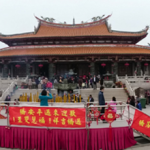 Continue reading
Continue readingThe A-Ma Cultural Village comprises a large temple complex (Tin Hau temple) and statue to A-Ma which both stand together on a hill top in Coloane.
- A-Ma Temple – The Oldest Temple in Macau
 Continue reading
Continue readingA-Ma Temple is the oldest and most famous Taoist temple in Macau. Built in 1488 and located close to the coast, it is dedicated to the Ma-tsu, the goddess of sailors and fishermen.
- I Leng Temple
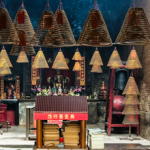 Continue reading
Continue readingThe I Leng Temple (also known as Ka Sin Tong) is a small temple standing on the Rua Direita Carlos Eugenio (a long street with several temples which crosses right across Taipa village).
- Kun Iam Statue & Ecumenical Centre
 Continue reading
Continue readingThe beautiful gold Kun Iam statue (大三巴牌坊) stands on a small island jutting into the Outer Harbour between Macau and Taipa, along Avenida Dr. Sun Yat-Sen.
- Lin Fung Temple
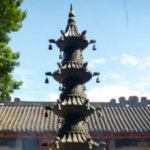 Continue reading
Continue readingLin Fung Temple (Temple of Lotus) is a Buddhist temple built in 1592. It is famous for its history as a stopping off place for Mandarins visiting Macau (partly due no doubt to it’s proximity with the Chinese border).
- Na Tcha Ancient Temple
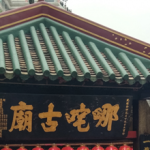 Continue reading
Continue readingThis small temple is one of two dedicated to Na Tcha in Macau, the other being the more famous one just behind The Ruins of St Pauls.
- Na Tcha Temple
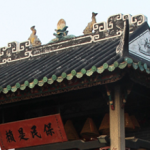 Continue reading
Continue readingNa Tcha Temple (Templo Na Tcha, 大三巴哪吒廟) was built in 1888, this is a Chinese folk religion temple dedicated to the worship of the deity Na Tcha.
- Pak Tai Temple
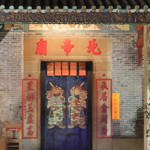 Continue reading
Continue readingThe temple is dedicated to Pak Tai (北帝廟, literally ‘Northern Emperor’) who is believed to have the divine power to withstand floods and fire.
- Pao Gong (Pau Kung) Temple
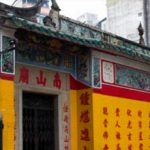 Continue reading
Continue readingThis Pau Kung Temple sits on the Rua da Figueira, a narrow, steep street that runs up to Kiang Wu Hospital from near St Antony’s Church.
- Pou Tai Monastery
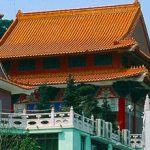 The Pou Tai monastery is the only buddhist temple on Taipa. One of the most picturesque temples, it houses the largest Buddha statue in Macau within the mail hall. It is located on the hill on the north side of Taipa, just off the central public transport bridge near the Regency Art Hotel. Has a buddhist ...Continue reading
The Pou Tai monastery is the only buddhist temple on Taipa. One of the most picturesque temples, it houses the largest Buddha statue in Macau within the mail hall. It is located on the hill on the north side of Taipa, just off the central public transport bridge near the Regency Art Hotel. Has a buddhist ...Continue reading - Sam Kai Vui Kun Temple
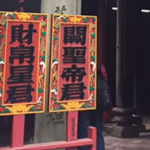 Continue reading
Continue readingSam Kai Vui Kun Temple (三街會館) is located not too far from Senado Square,near St Dominic’s Market (which used to be the old Chinese Bazaar area of the city).
- Sam Po Temple
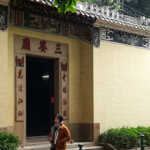 Continue reading
Continue readingThis temple was built in 1843, and is is dedicated to Sam Po – a water goddess and third eldest sister of Tin Hau, who is often regarded as the guardian of seafarers (protection against the perils of the sea is a common theme through many of the temples in Macau). ‘Sam Po’ literally means ‘third grandmother’
- Sam Seng Kong Temple
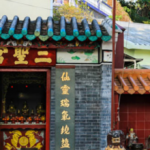 Continue reading
Continue readingThe small Sam Seng Kong Temple in Coloane was built in the late Qing Dynasty (Tongzhi 4th year – 1865).
- Sin Fong Temple
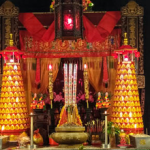 Continue reading
Continue readingThe Sin Fong Temple is dedicated to General Vanguard (Yang Ye) who was a famous general originally from the Northern Han Dynasty, who now is a deity which protects against aggression.
- Tam Sin Sing / Tam Kung Temple
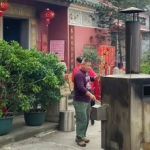 Continue reading
Continue readingThe Tam Sin Sing Temple (or Tam Kung Temple, as it was commonly known) was built in 1862 in the late Qing Dynasty, and is dedicated to the water god Tam Kung, a water god worshipped in Macau and Hong Kong.




